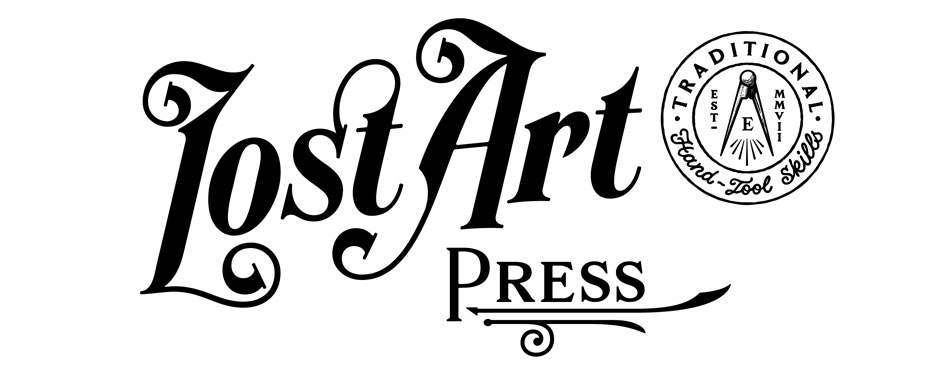One of the reasons John and I started Lost Art Press was because we were crazily enamored with the work of people such as Christian Becksvoort, Peter Follansbee, John Brown and a whole host of other people who built things by the sweat of their brows.
One night about 11 years ago over a few beers, John and I both proclaimed that we wished we could send these people large sums of money to thank them simply for doing what they do – no strings attached. Something like Medici-style patronage.
One problem: John and I were neither rich nor royal.
So we started Lost Art Press as a way for us to support people we genuinely adore. We offer generous terms to our authors (more generous than any other publisher I know of). And we keep their books in print for as long as the authors allow (which we hope is forever).
So this is why we don’t publish books from just any woodworker. Every living author in our stable is someone we know personally. I have seen their work. I have eaten with them and have a sense of who they are. And I’ve developed a strong respect for the way they treat others and the way they approach their work.
I won’t work with someone I don’t want to sit down and eat a meal with.
It’s a hilariously stupid way to run a corporation. We should instead be chasing authors who will make us the most money.
Today Matt Bickford (author of “Mouldings in Practice”) stopped by the Lost Art Press storefront with his entire family (shown above), and their boys roamed free around my shop playing with my vises, lathe and whatever else wasn’t tied down, barbed or electrified.
To see this thriving family that lives off of Matt’s salary as a planemaker was a gas. It’s rare to see a family unencumbered by corporate jobs, mindset and schedules. After a raucous visit, they headed off to see the Cincinnati Art Museum and maybe the Fire Museum. A park? The aquarium? It all makes me tired just to think of it.
So yeah, we want to support more of that.
— Christopher Schwarz













